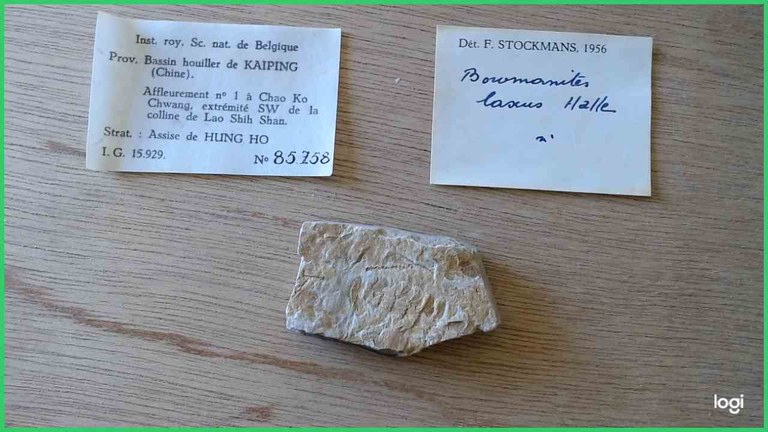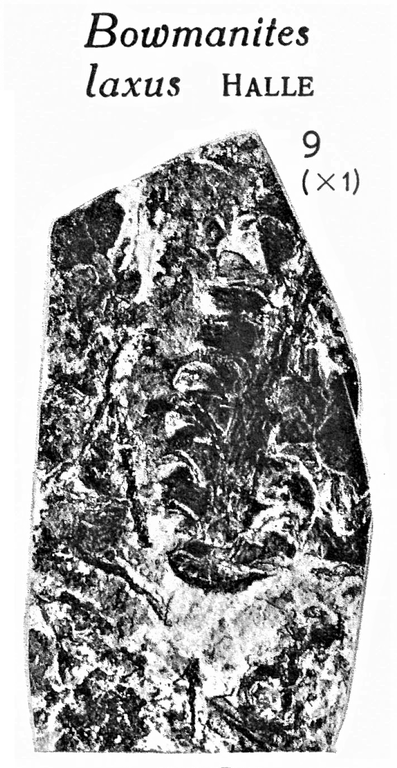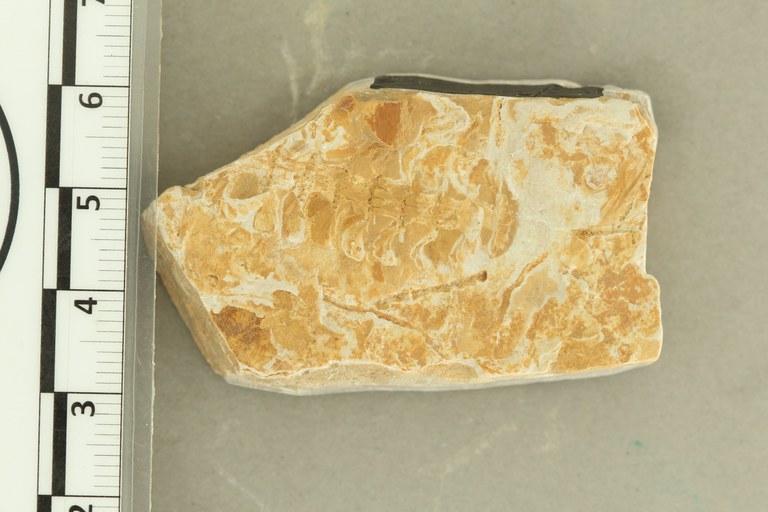Bowmanites laxus Halle
IRSNB b 8667
IG: 15929 Reg.: 85758
Âge: Carboniferous
Localité : Assise de Hung Ho, Affleurement à l'extrémité Sud-Ouest de la colline Lao Shih Shan , China
Description: Figured Specimen
Diagnose (donnée par Halle) : «The axis is very thick, measuring 2 cm in breaùth on the impression; it is only very faintly and irregularly striated. At the node there are seen, to the left of the stem, what may be traces of leaves. These are directeù upwards, and were probably about 2 cm long or more, their apices being bent or broken. They are very narrow, subulate, with simple strong midribs and are rather more suggestive of Annularia than of Sphenophyllum.
» The cones are cylindrical, at least 5 cm long, probably much more. Their axis is thick, reaching 4 mm in breadth on the impression, with internodes usually a little shorter than the breadth of the axis.
» The bracts are confluent for about half their length, only their upper halves forming free teeth, which are narrowly triangular, linear gradually tapering into a subulate apex. It is not clear whether the whole verticil of bracts was coherent, but at least six teeth have been observed to be united into a common dise. The bracts are perpendicular to the axis or more often, probably especially at a later stage, strongly recurved; the length of the bracts, from node to apex, is about twice that of the internode. In general aspect and position the whorls strongly recall Cingularia.
» The sporangia are attached to sporangiophores arising from the adaxial side of the bract below its middle.
» The stalks of the sporangiophores are about 2,5 mm long, very slender, obliquely ascending, slightly curved towards the axis; they are slightly peltate, expanding at the apex into a very small plate. There seem to be two sporangia attached to each sporangiophore.
» The diameter of the sporangia is about 1-1,5 mm. It is only rarely that the sporangiophores are preserved.
» This form is especially characterized through its perpendicular or reflexed flattened whorls of bracts. »
Publication:
Stockmans, F. & Mathieu, F. La Flore Paléozoïque du Bassin Houiller de Kaiping (Chine). Association pour l’étude de la Paléontologie et de la Stratigraphie houillères, n°32
p. 55, Planche XV, fig. 9



